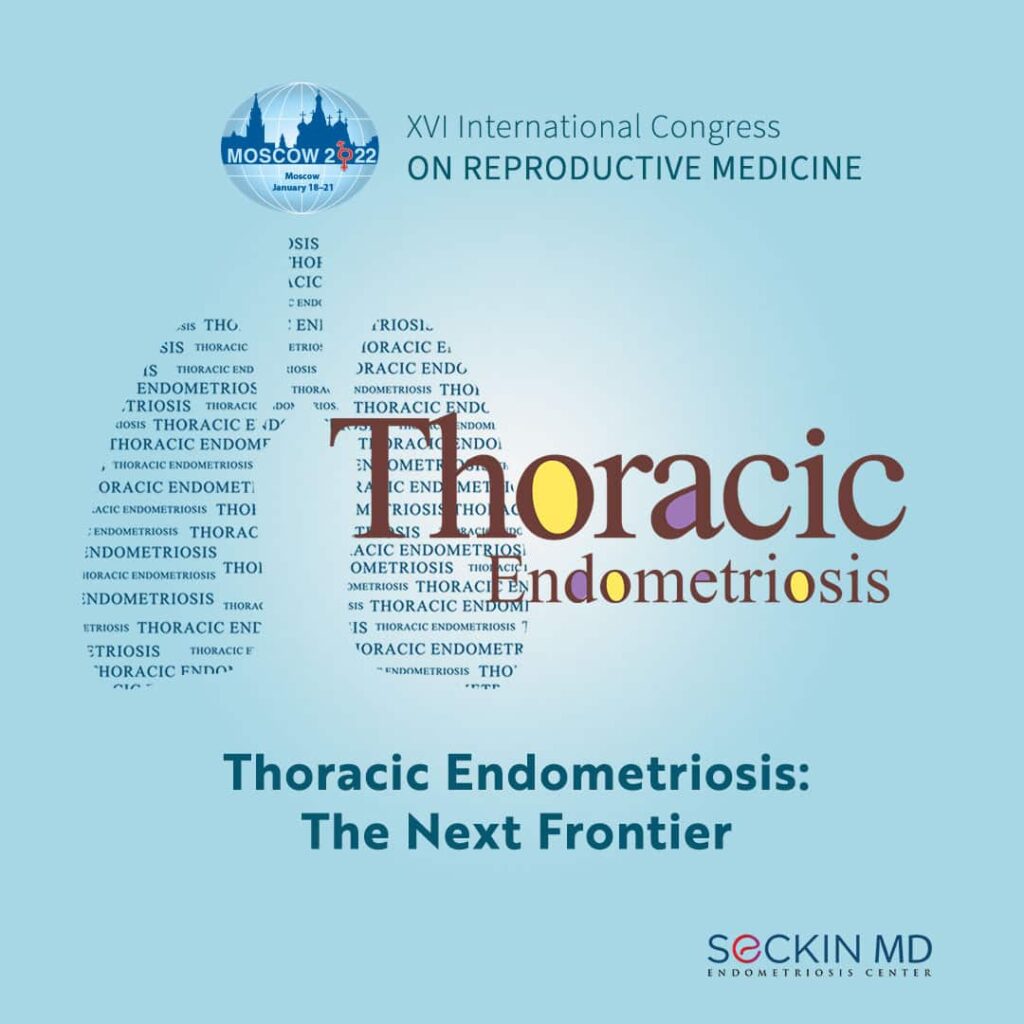Thoracic Endometriosis: The Next Frontier

The XVI. International Congress on Reproductive Medicine held in Moscow brought together some of the world’s most influential scientists and clinicians in the field of reproductive health to discuss several key topical issues.
Two plenary sessions were dedicated to endometriosis. These discussed various aspects of the disease such as diagnosis, treatment, rehabilitation, and surgery. They underscored the importance of this often misunderstood and misdiagnosed disease.
In the second plenary, Dr. Tamer Seckin delivered a keynote lecture on thoracic endometriosis. He touched on aspects such as how it creates more questions than answers and why a dual compartment approach to excise lesions is the best option.
Thoracic endometriosis syndrome
Endometriosis can not only occur in the pelvic peritoneum but can also spread to other parts of the body. This includes the diaphragm and thorax. Thoracic endometriosis syndrome (TES) is an extremely rare form of extra-pelvic endometriosis.
The most common symptom of TES is catamenial pneumothorax present in 73% of cases. This is followed by catamenial hemothorax (14%), catamenial hemoptysis (7%), and lung nodules (6%). Other symptoms include catamenial-associated chest pain, shortness of breath, gastrointestinal symptoms, dysmenorrhea, and dyspareunia.
Causes for thoracic endometriosis
Dr. Elmer Maurer and colleagues first described the correlation between endometriosis and pneumothorax in 1958. This case was of a 35-year-old woman who had experienced 15 episodes of spontaneous pneumothorax that always coincided with her menstruation. Maurer and colleagues’ investigations led them to conclude that a hole in the diaphragm resulted in the passage of air through the genital tract into the peritoneal cavity and finally into the thoracic region leading to lung collapse.
The exact causes for TES are still not clear. However, Sampson’s retrograde menstruation theory, which postulates reverse movement of menstrual blood and endometrial tissue through the fallopian tubes and into the thorax via diaphragmatic defects adequately explains all features of TES. These diaphragmatic defects can result in a negative pressure causing air to rush from the peritoneal cavity into the thorax. This suction pump effect leads to pneumothorax or lung collapse.
Findings from the literature
A recent meta-analysis and review of the literature up to March 2019 that included a total of 732 patients with at least eight confirmed reports of TES revealed some interesting insights.
- Up to 80% of women with TES also had concomitant pelvic endometriosis.
- Diaphragmatic anomalies were present in at least 84% of cases.
- Video-assisted thoracoscopic surgery (VATS) was preferred in 84% of the cases.
- VATS and laparoscopy are together useful for the diagnosis and treatment of TES and abdominal endometriosis.
Dual compartment approach – pelvic findings
A dual compartment approach that adequately removes lesions both in the thorax and the pelvic region is thus necessary to provide lasting relief. Between January 2013 and July 2021, we performed about 1,664 laparoscopic excision surgeries. Of these, about 2% or 37 patients had undergone both VATS and laparoscopic deep excision surgery.
In our practice, we observed that all women with thoracic endometriosis had pelvic endometriosis as well. 90% of these patients had a prior pneumothorax while about 11% of them had a recurring pneumothorax.
In about 502 total peritoneal and chest samples, we observed that an overwhelming 61% were positive for endometriosis. Of those, 372 had pelvic, 82 abdominals, and 48 thoracic endometriosis. About 39% of the samples also showed inflammation and fibrosis.
We also found that 65% of the 502 cases we dealt with had deep-infiltrating endometriosis (DIE). And 35% of them had peritoneal endometriosis.
Dual compartment approach – thoracic findings
In the thorax, we observed pleural lesions, blebs, atypical vessels, lung parenchymal defects, and nodulation.
In the 37 patients who had undergone a dual compartment approach, we observed several features on the diaphragm. These included adhesions, fenestrations on the central tendon alone, and lesion implants on both the muscle and central tendon.
Dr. Seckin is of the view that the inflammatory processes causing the peritoneal pores are also responsible for holes in the diaphragm.
About 52% of the cases had the aforementioned diaphragmatic defects. Almost a third (27%) of them involved the diaphragm, pleura, and lung parenchyma as well. The disease affected the diaphragm and lung parenchyma in 8% of the patients while 13% had defects in the diaphragm and the pleura.
In the last 18 months, we had about 17 instances of chest tube insertions to drain blood, fluid, and air from the lungs.
Treating thoracic endometriosis with combined VATS and laparoscopic deep excision surgery
Since peritoneal pores often precede diaphragmatic pores, recognizing peritoneal pores is the key step in understanding the extent of inflammation associated with TES. Our patented Aqua Blue Contrast (ABC)™ technique, helps in easy visualization and identification of peritoneal features that are not normally visible. ABC uses 5 mL of methylene blue diluted in 3 liters of Ringer’s lactate solution. In this technique, we submerge the peritoneal area under investigation in the blue dye solution. We then distend it using hydrodistension thus eliminating any potential gas pressure on the peritoneum.
ABC improves visibility by removing the reflection of red and yellow lights. This allows the surgeon to clearly visualize multiple endometrial lesions and pores on the peritoneum. This also minimizes the risk of damage to the surrounding healthy tissue.
Since thoracic and pelvic endometriosis is concomitant, it is important that both the peritoneal and diaphragmatic lesions are identified and marked for removal.
A staged, dual compartment approach that combines VATS and laparoscopic deep excision surgery performed by a skilled surgery team can help in the effective removal of all visceral and pleural lesions thereby reducing recurrences and vastly improving patients’ overall quality of life.
Get a Second Opinion
Our endometriosis specialists are dedicated to providing patients with expert care. Whether you have been diagnosed or are looking to find a doctor, they are ready to help.Our office is located on 872 Fifth Avenue New York, NY 10065.
You may call us at (646) 960-3080 or have your case reviewed by clicking here.